
[354] Vanellus vanellus, Lapwing
Introduction
Our final bird is Vanellus vanellus, the (Northern) Lapwing, probably the most attractive of our wading birds. Its back can show a pattern of iridescent colours and its impressive crest is always on view.
All the members of the genus Vanellus are called some kind of Lapwing, but the Northern Lapwing is normally just called a Lapwing. It can also be called a Green Plover or has onomatopoeic names such as Peewit, Pewit or Tew-it.
(All other Plovers come in the related subfamily Charadriinae.)
Taxonomy
Kingdom – Animals
Phylum – Chordates
Class – Aves (Birds)
Order – Charadriiformes
Family – Charadriidae
Subfamily – Vanellinae
Genus – Vanellus
Scientific Name – Vanellus vanellus
Name
One theory is that Lapwing comes from the lapping sound of its flight as lap-wing. Wiktionary says that it is derived from Old English hleapan-wincian or modern leap-wink, coming from the way it distracts predators from the nest by trailing a wing and pretending to be unable to fly. Vanellus is a diminutive of the Latin vannus, a winnowing fan (used to separate wheat from chaff.) This is cognate with fan.
Description
We have covered a few of the common waders (or shore birds) of Britain in these blogs and the last few were summarised in [344] Redshank. But I have left the best until last.
The Lapwing is a medium sized wader. It is smaller than [209] Godwits and [168] Oystercatchers but larger than most other species.
Its underparts are almost pure white and its back is very dark, showing patterns of iridescent green and purple in sunlight. Its relatively short legs are dark red and the distinctive head has a short bill and a black cap extending backwards into a crest.
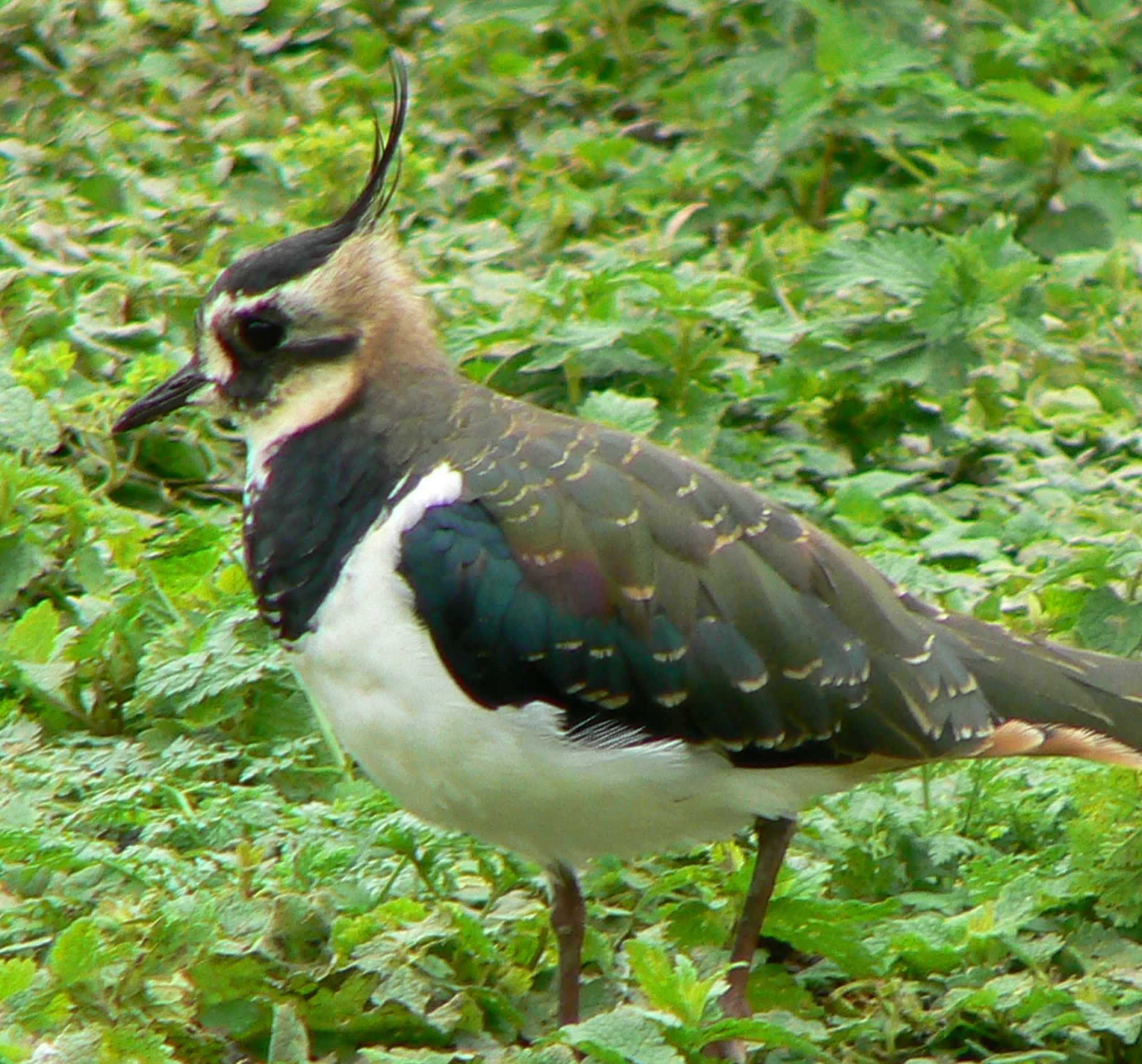
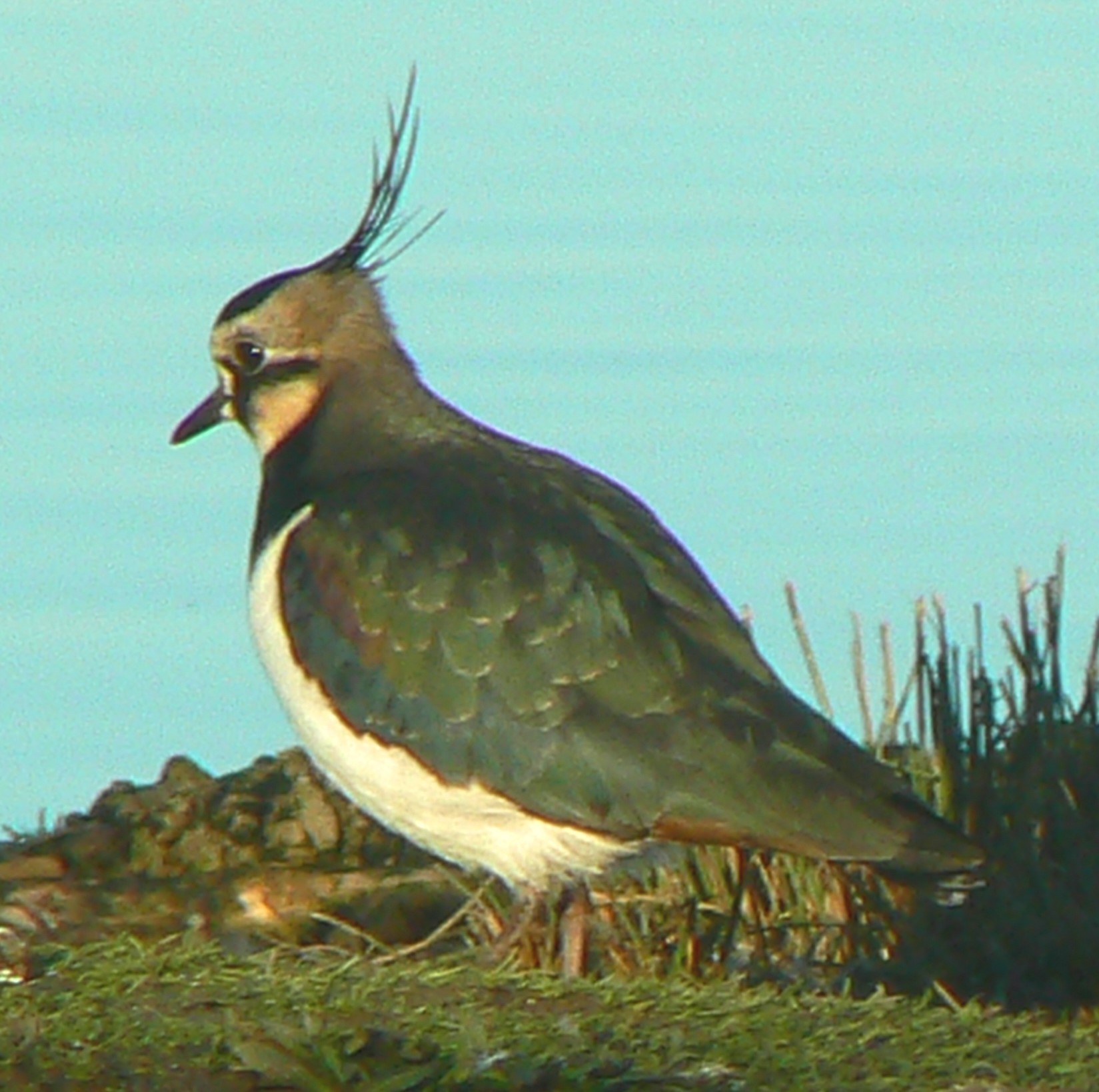
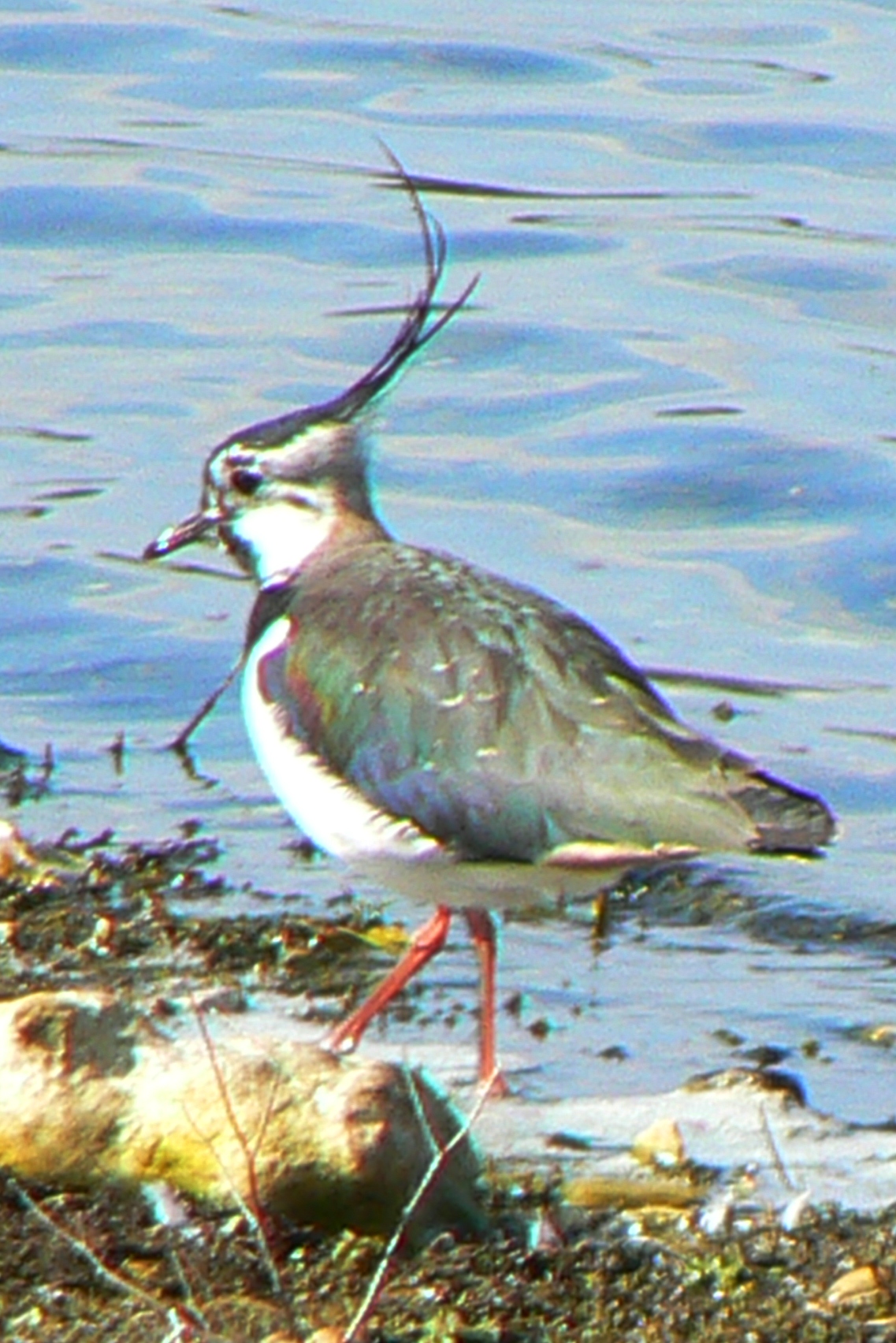
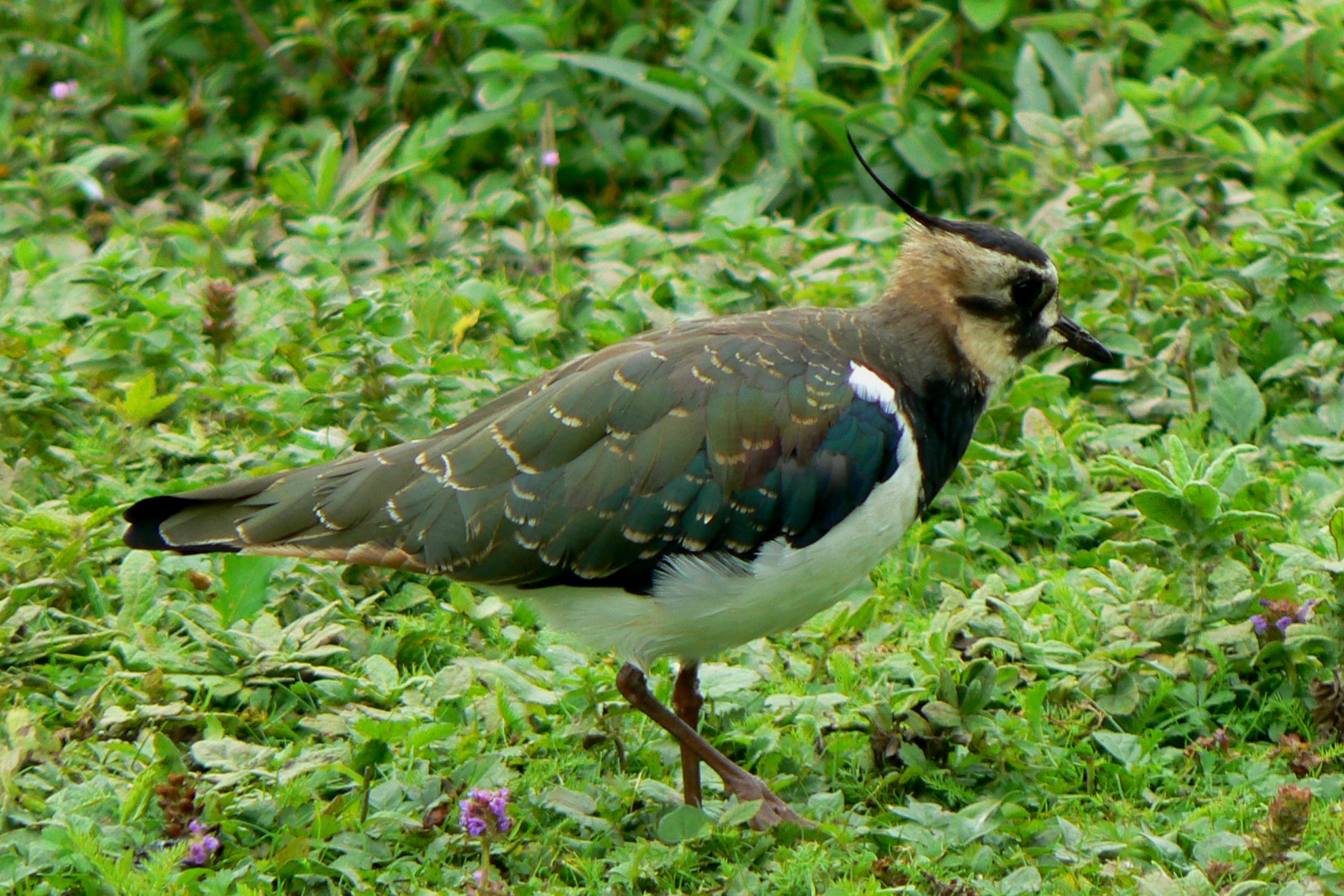
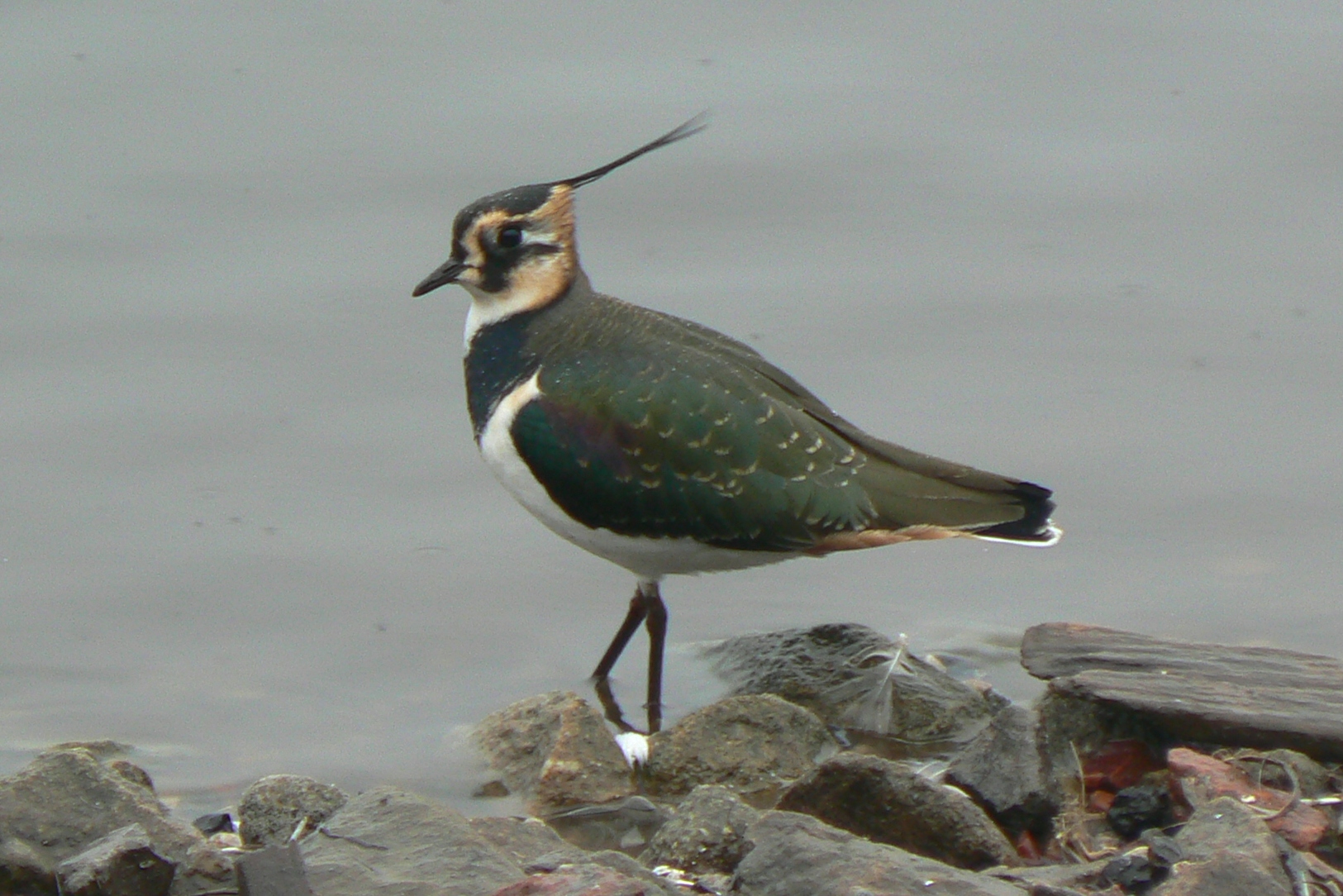
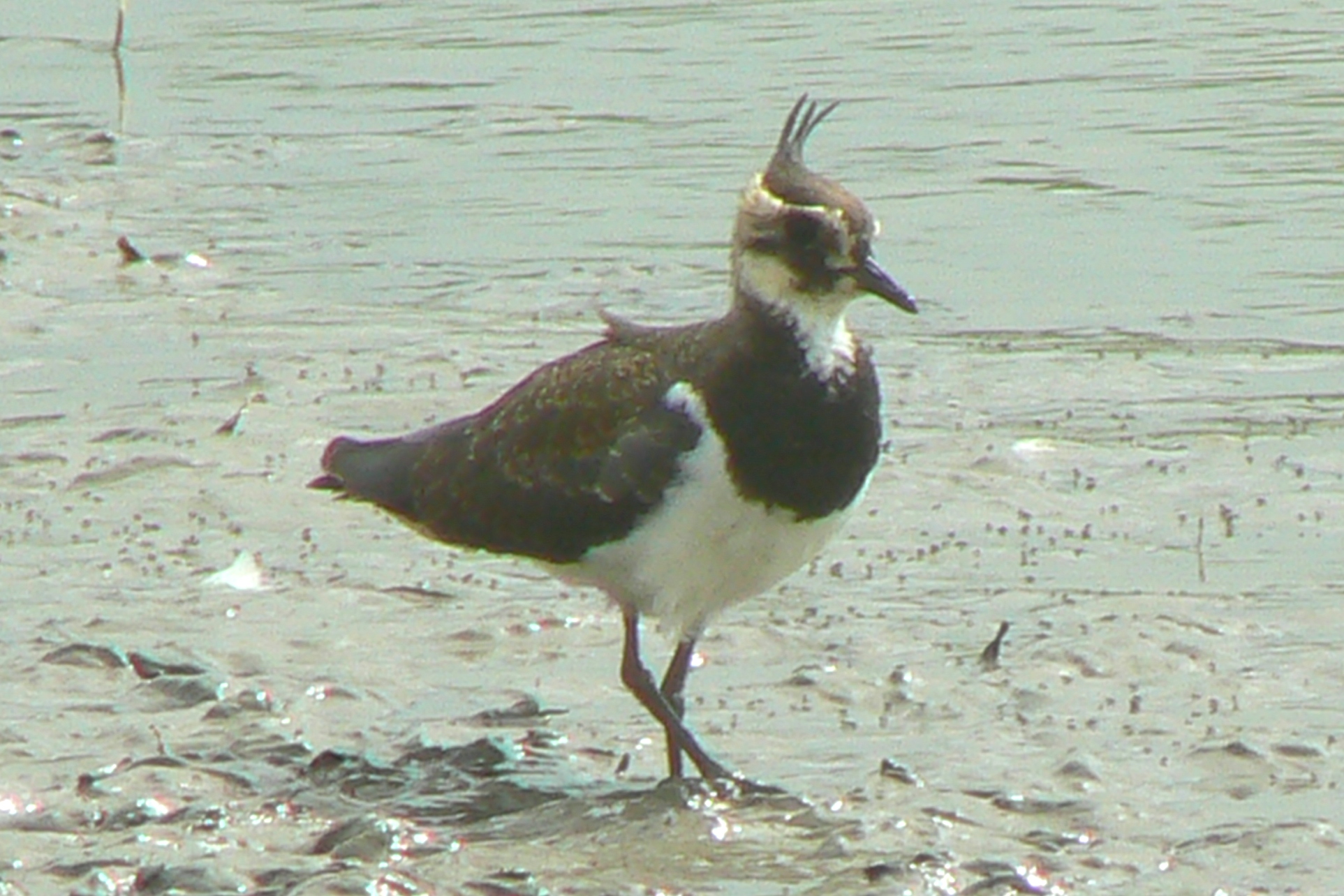



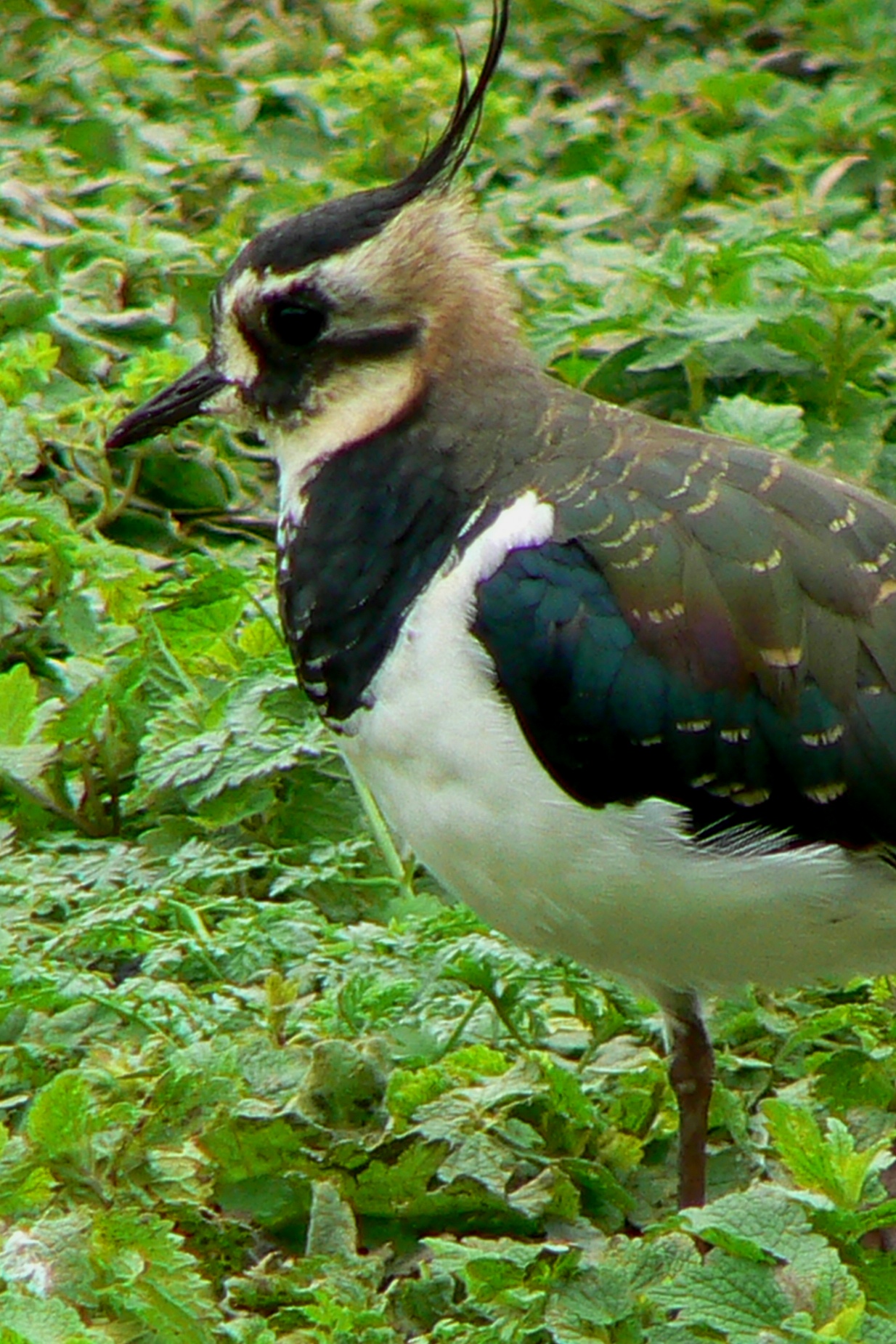


Like the Oystercatcher but unlike most waders, male and female birds are similar and their appearances do not change from summer to winter. Males may have a slightly more extensive crest.
It has large wings and a distinctive flapping flight pattern. It is normally seen in large flocks and they are easily recognisable by their flight when they take to the air after disturbance. Their courtship pattern includes an up and down flight demonstration.


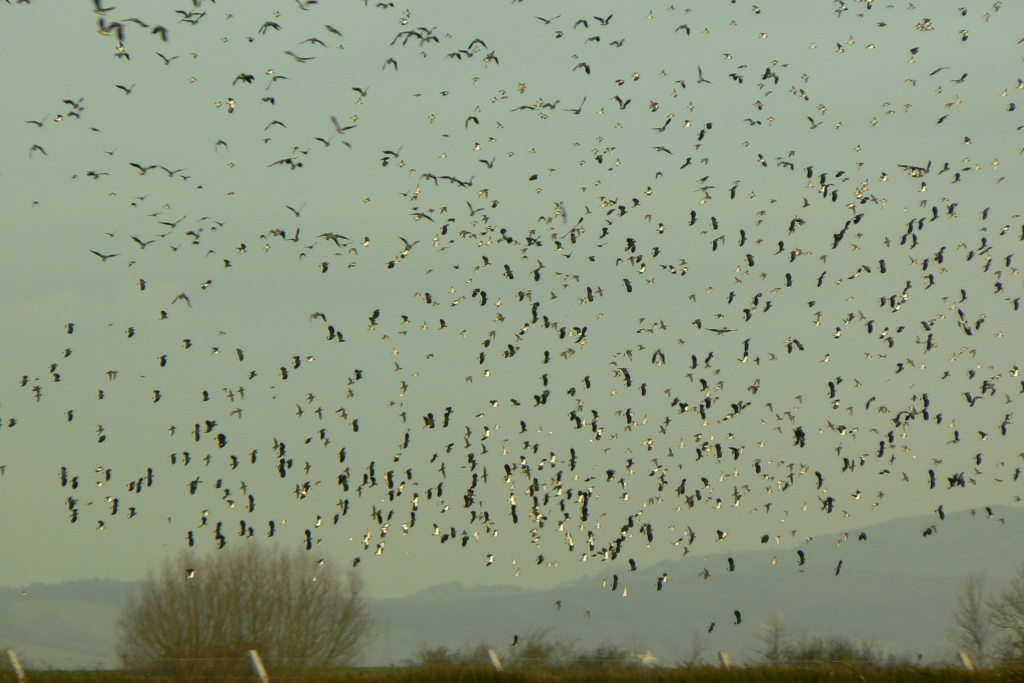
It feeds primarily on insects and other small invertebrates.
Habitat
Vanellus vanellus has a patchy distribution over most of sub-Arctic Europe and a few other scattered locations. In the UK it is more or less resident over England and Wales, mostly a winter visitor in the southwest, and a summer visitor to Scotland. It breeds on farmland and used to be much more common as a breeding bird in England. Changes in agriculture and the reduction of open grassland have drastically affected its numbers.

Other Notes
Although they are gregarious you can often see just one or two birds at close distances from hides at wetland centres.
See also
That’s it. No more birds. You can see them all via the Birds category. You can, of course read about birds in general in the Birds Page above.
I was going to say something about Bird Clubs and point out that in America they are called Audubon Societies. John James Audubon (1785-1851) born Jean-Jacques Rabin in what is now Haiti, was a famous American naturalist who studied and documented American birds. I won’t go into his details but in the USA, the Audubon Naturalist Society is in the process of renaming themselves following recent revelations about his attitude to slaves and native Americans.
